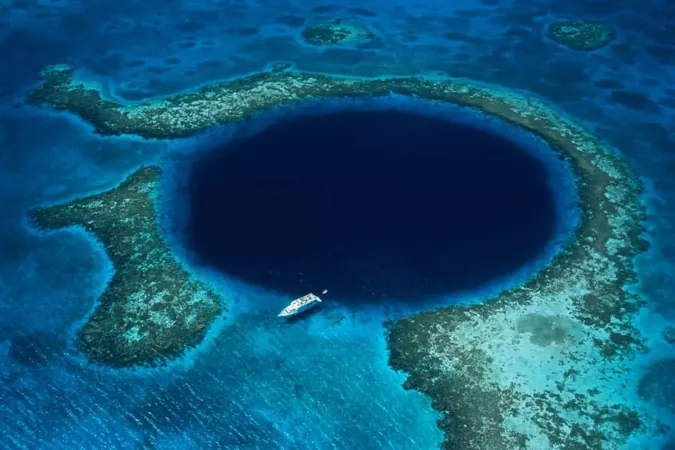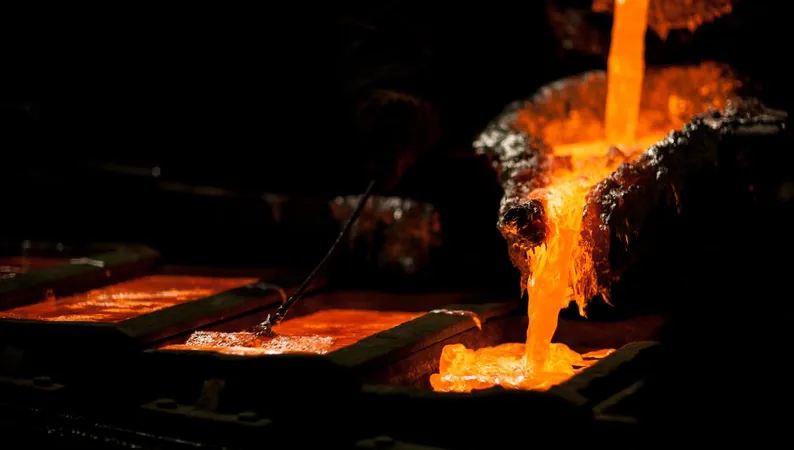
Alarming Discovery in Belize's Great Blue Hole Reveals a Dark Future for Tropical Cyclones
2025-04-05
Author: Wai
The Great Blue Hole: More than Just a Diving Spot
Nestled off the coast of Belize, the Great Blue Hole's beauty belies its significant role in tracking climatic changes over millennia. Recently, a team from Goethe University Frankfurt, spearheaded by geoscientist Dominik Schmitt, precisely extracted a 30-meter (approximately 98-foot) sediment core from its depths, revealing a historical record that spans over 5,700 years.
Evidence of Increasing Cyclone Activity
Analysis of the sediment core revealed 694 distinct "event layers" that correspond to past tropical cyclones, reflecting the frequency and intensity of storms over time. Through meticulous examination, the researchers noticed an alarming trend: storm activity has escalated notably throughout history, especially in recent decades. This increase is attributed to changes in the Intertropical Convergence Zone (ITCZ), a vital area that plays a critical role in storm formation across the Atlantic.
A rising concern highlighted by the team's findings is the unprecedented acceleration in cyclone frequency observed particularly over the last 20 years. They reported a staggering forecast: if current patterns continue, an estimated 45 tropical storms and hurricanes could impact the Caribbean by the end of the century. This figure dwarfs the historical variability seen over the last 6,000 years and underscores a worrying trend directly linked to human-induced climate change.
Impact of Climate Change on Storm Patterns
A comprehensive study published in the journal Geology has corroborated these findings, shedding light on the correlation between anthropogenic climate shifts and intensified cyclone activity. The warming climate, which began during the Industrial Revolution, has created conditions conducive to more frequent and severe storms, posing threats not only to the Caribbean but potentially to broader coastal regions as well.
The Value of Sediment Layers
The sedimentary layers extracted from the Great Blue Hole serve as time capsules, offering critical insights into Earth’s climate history. The unique environmental conditions of the sinkhole—characterized by oxygen-free bottom waters—have allowed these sediments to settle largely undisturbed, preserving a precise record of past storm events. Each sediment layer holds clues about the atmospheric conditions present at the time of deposition, with larger grains specifically indicating violent weather incidents.
Looking Ahead: An Uncertain Future
Given the data collected, the research team warns of an impending era marked by severe storm activity. "Our results suggest that we could witness around 45 tropical storms and hurricanes in this region alone during this century," stated biosedimentologist Eberhard Gischler. This stark prediction highlights not only the immediate threat posed by climate change but also the urgency required for global action to mitigate its impacts.
The findings from Belize's Great Blue Hole serve as a critical reminder of the dire environmental shifts unfolding before us. As we stand on the brink of an unprecedented climatic crisis, the question remains: are we prepared for the stormy future that awaits us?




 Brasil (PT)
Brasil (PT)
 Canada (EN)
Canada (EN)
 Chile (ES)
Chile (ES)
 Česko (CS)
Česko (CS)
 대한민국 (KO)
대한민국 (KO)
 España (ES)
España (ES)
 France (FR)
France (FR)
 Hong Kong (EN)
Hong Kong (EN)
 Italia (IT)
Italia (IT)
 日本 (JA)
日本 (JA)
 Magyarország (HU)
Magyarország (HU)
 Norge (NO)
Norge (NO)
 Polska (PL)
Polska (PL)
 Schweiz (DE)
Schweiz (DE)
 Singapore (EN)
Singapore (EN)
 Sverige (SV)
Sverige (SV)
 Suomi (FI)
Suomi (FI)
 Türkiye (TR)
Türkiye (TR)
 الإمارات العربية المتحدة (AR)
الإمارات العربية المتحدة (AR)